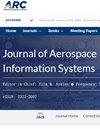空间运载火箭的能效优化评价
IF 1.5
4区 工程技术
Q2 ENGINEERING, AEROSPACE
引用次数: 0
摘要
空间运载火箭是一个高度复杂的多学科系统,具有多个子系统。这些子系统变化很大,使目标函数的选择复杂化。一些人认为,能源效率是一个合适的目标函数,与不同的子系统相关;然而,能源效率的一些特点可能使它不适合这项任务。功能的核心是系统在特定环境下所能做的功。本文探讨了在空间运载火箭优化设计中应用能量效率的问题。构建了包括和排除分级质量降低的能效目标函数。这些目标函数用于基于物理的火箭弹道模型的优化。结果与土星五号的历史数据进行了比较,并进行了分析,以调查该度量的适用性。由于质量在机械能计算中的重要性,火用效率有利于设计更大质量的末级,特别是当计算中包括与分级相关的质量下降时。本文章由计算机程序翻译,如有差异,请以英文原文为准。
Evaluation of Exergy Efficiency Optimization of Space Launch Vehicles
Space launch vehicles are highly complex multidisciplinary systems with multiple subsystems. These subsystems vary significantly, complicating the selection of an objective function. Exergy efficiency has been suggested by some as a suitable objective function with relevance across a diverse set of subsystems; however, some characteristics of exergy efficiency may make it poorly suited for the task. At its core, exergy is the amount of work available from a system for a certain environment. In this paper, the use of exergy efficiency in the optimization of a space launch vehicle is explored. Exergy efficiency objective functions are constructed, including and excluding mass decreases from staging. These objective functions are used for the optimization of a physics-based rocket trajectory model. The results are compared to historical Saturn V data and analyzed to investigate the suitability of the metric. Due to the importance of mass in mechanical energy calculations, exergy efficiency can favor designs with more massive final stages, particularly when calculations include the staging-related mass decreases.
求助全文
通过发布文献求助,成功后即可免费获取论文全文。
去求助
来源期刊

Journal of Aerospace Information Systems
ENGINEERING, AEROSPACE-
CiteScore
3.70
自引率
13.30%
发文量
58
审稿时长
>12 weeks
期刊介绍:
This Journal is devoted to the dissemination of original archival research papers describing new theoretical developments, novel applications, and case studies regarding advances in aerospace computing, information, and networks and communication systems that address aerospace-specific issues. Issues related to signal processing, electromagnetics, antenna theory, and the basic networking hardware transmission technologies of a network are not within the scope of this journal. Topics include aerospace systems and software engineering; verification and validation of embedded systems; the field known as ‘big data,’ data analytics, machine learning, and knowledge management for aerospace systems; human-automation interaction and systems health management for aerospace systems. Applications of autonomous systems, systems engineering principles, and safety and mission assurance are of particular interest. The Journal also features Technical Notes that discuss particular technical innovations or applications in the topics described above. Papers are also sought that rigorously review the results of recent research developments. In addition to original research papers and reviews, the journal publishes articles that review books, conferences, social media, and new educational modes applicable to the scope of the Journal.
 求助内容:
求助内容: 应助结果提醒方式:
应助结果提醒方式:


